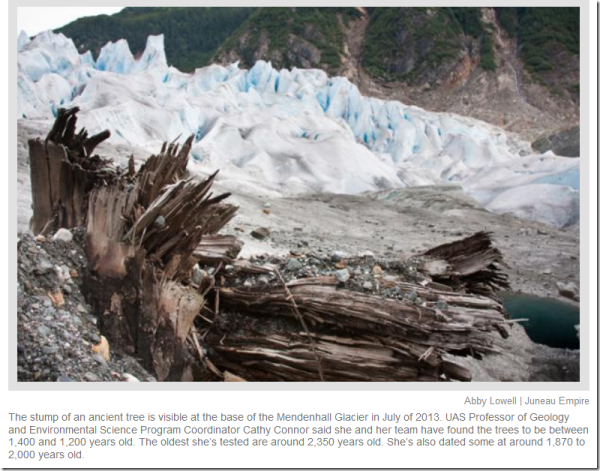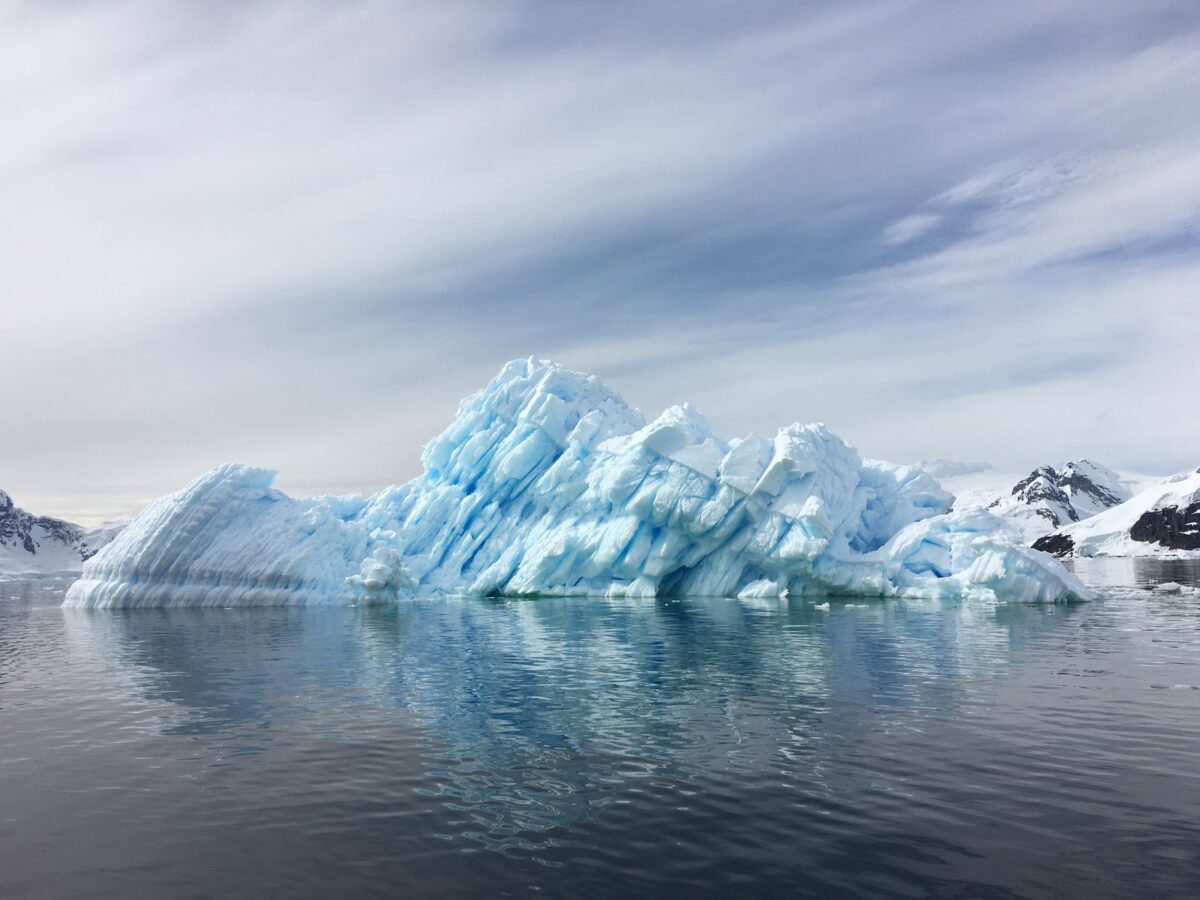As I posted recently, the emergence of WWI-era Alpine bunkers previously buried under ice raises an awkward question or two. If, as the Climate Cult insist, glaciers in retreat now is because of human-induced global warming, what caused them to obviously retreat far enough for soldiers to dig bunkers over a century ago?
And what about the newly-exposed millennia-old forests in Alaska?
It’s no wonder melting glaciers are one of the poster-children of the global warming cult: they’re easily visible phenomena, and photos clearly show some in retreat. It’s not like such a thing has ever happened before… is it?
So why are scientists finding the remains of great forests that were buried over a thousand years ago by now-retreating glaciers?

Above is an example at the Mendenhall Glacier, where carbon dating reveals the trees are between 1200 and 1400 years old. Other older trees have also been found.
Exactly the same is happening elsewhere in Alaska, at the famous Exit Glacier, below. The trees there are a similar age:
These are not just odd trees, but the remnants of great forests.
I’m no arborist, but I have a hunch that trees don’t grow on — and especially not under — glaciers.
It is clearly evident that the glaciers then were much smaller than they are now.
And it is not only Alaska. At the other end of the continent in Patagonia, more buried trees are turning up, though these are younger, between 250 and 460 years old
It’s almost as if glaciers have advanced and retreated periodically over the centuries.
Because they have.
Beginning in the 16thC, Alpine glaciers began to advance down the valleys. We know this because of the wealth of historical accounts from the time. This was of course the beginning of the period known as the Little Ice Age.
As Prof. Ian Plimer has said, we must be the first generation of humans to fear a warm climate. Previous generations knew from experience just how miserable cooling climates really are.
As the glaciers relentlessly pushed downslope thousands of acres of farm land were ruined and many villages were left uninhabitable such as La Bois where a government official noted “where there are still six houses. all uninhabited save two, in which live some wretched women and children…Above and adjoining the village there is a great and horrible glacier of great and incalculable volume which can promise nothing but the destruction of the houses and lands which still remain”. Eventually the village was completely abandoned […]
Alpine glaciers, which had already advanced steadily between 1546 and 1590, moved aggressively forward again between 1600 and 1616. Villages that had flourished since medieval times were in danger or already destroyed. During the long period of glacial retreat and relative quiet in earlier times, opportunistic farmers had cleared land within a kilometer of what seemed to them to be stationary ice sheets.
Glaciological evidence shows that glaciers all over the world, from Alaska to China, were advancing. New Zealand, too.
In New Zealand the Franz Joseph glacier was “a mere pocket of ice on a frozen snowfield nine centuries ago”…. Then Little Ice Age cooling began and the glacier thrust downslope into the valley below smashing into the great rain forests that flourished there, felling giant trees like matchsticks. By the early 18th Century, Franz Joseph’s face was within 3 km of the Pacific Ocean .
But, the glaciers are melting now: it must be human-caused global warming. This might seem a logical argument — if you ignore the inconvenient fact that the glaciers began retreating before human CO2 levels rose to (relatively) high levels.
We all know that the same glaciers which grew massively a few centuries ago are now retreating. What many people don’t know is that this process began around the late 18th and early 19thC.
Surprising though it might sound, explorers were already mapping Alaskan glaciers in the 18thC. The map below shows how the glacier edge progressively retreated after 1760. Most of the glacier had disappeared even before 1900, whilst glacier loss has been relatively small in recent years.
In the Alps it was a similar story. The Rhone Glacier reached its maximum extent in the late 18thC, and, according to HH Lamb, had already receded half a mile by 1870. Most had disappeared by 1950.
Not a Lot of People Know That
So, we know that glaciers advance and retreat on centuries-long natural cycles. We know that glaciers were smaller during the Mediaeval Warm Period than they are even now. We know that the current cycle of retreat began before human carbon emissions intensified.
Remind me, again, why I’m supposed to think the end of the world is nigh?
Please share this article so that others can discover The BFD

